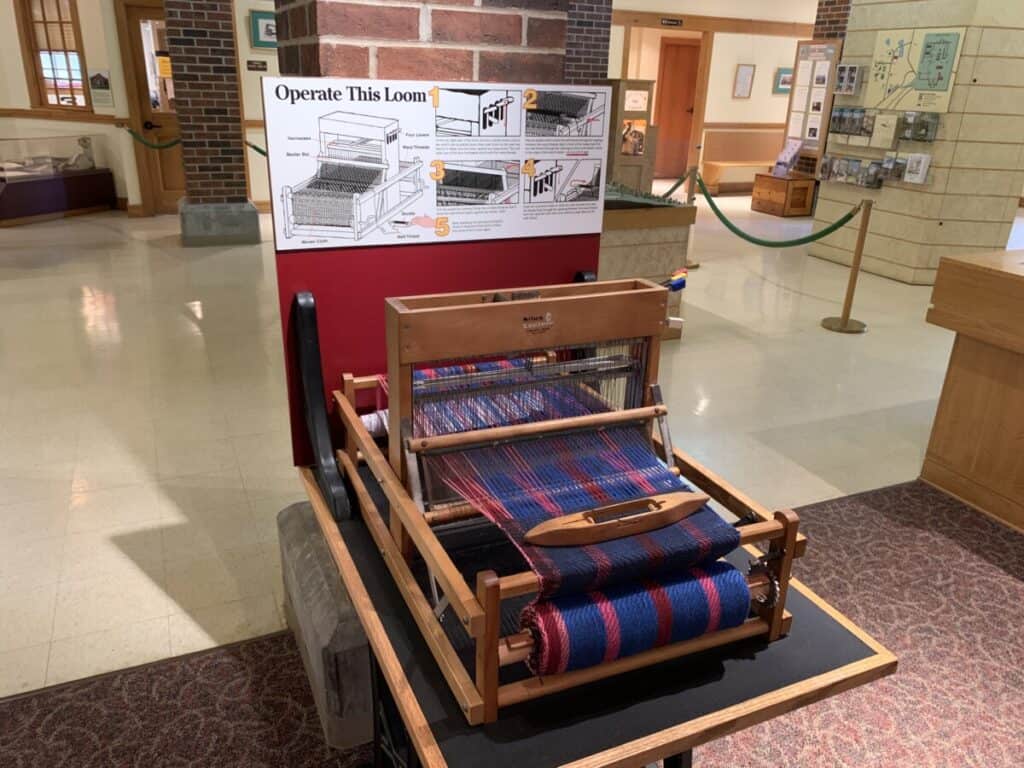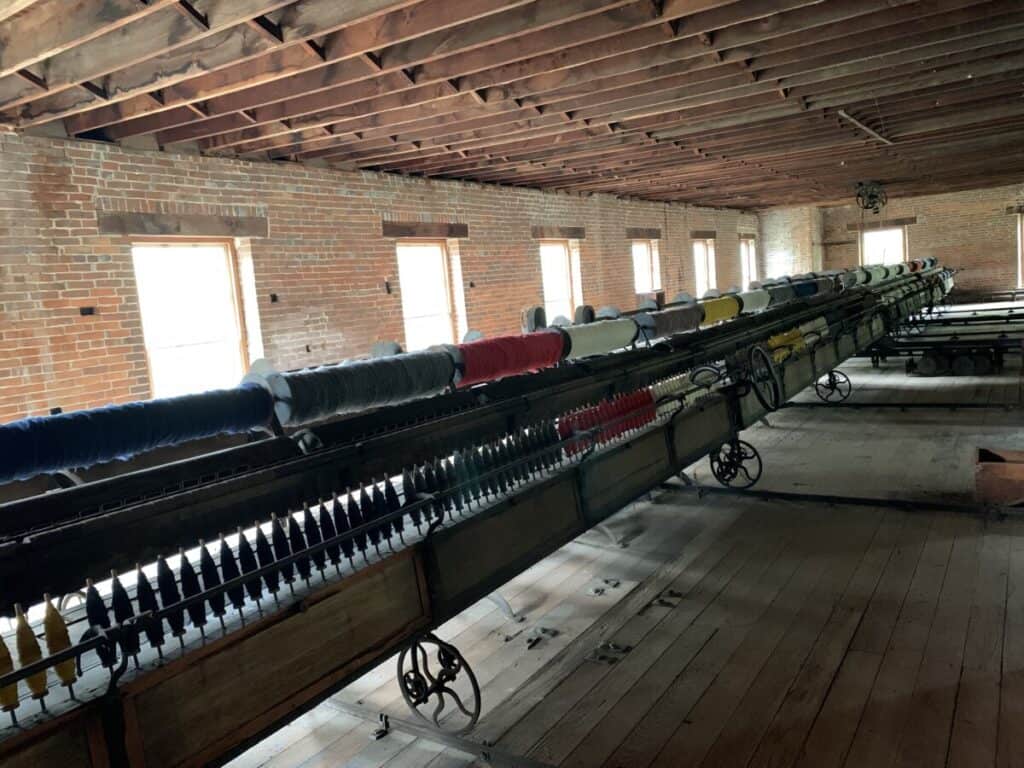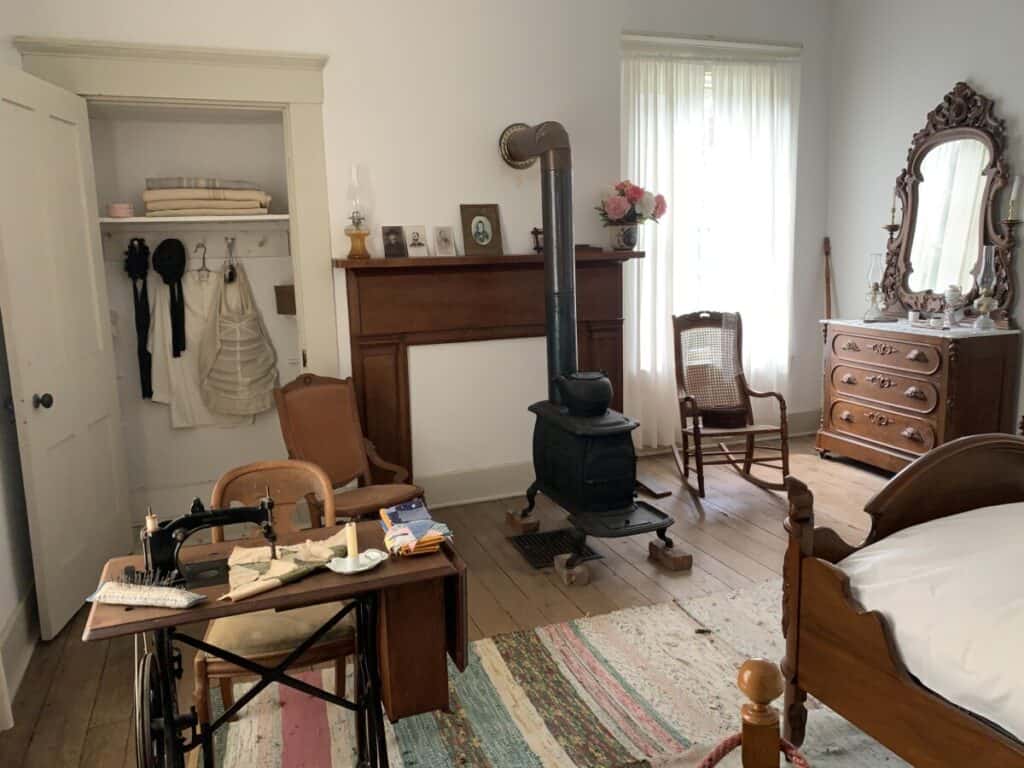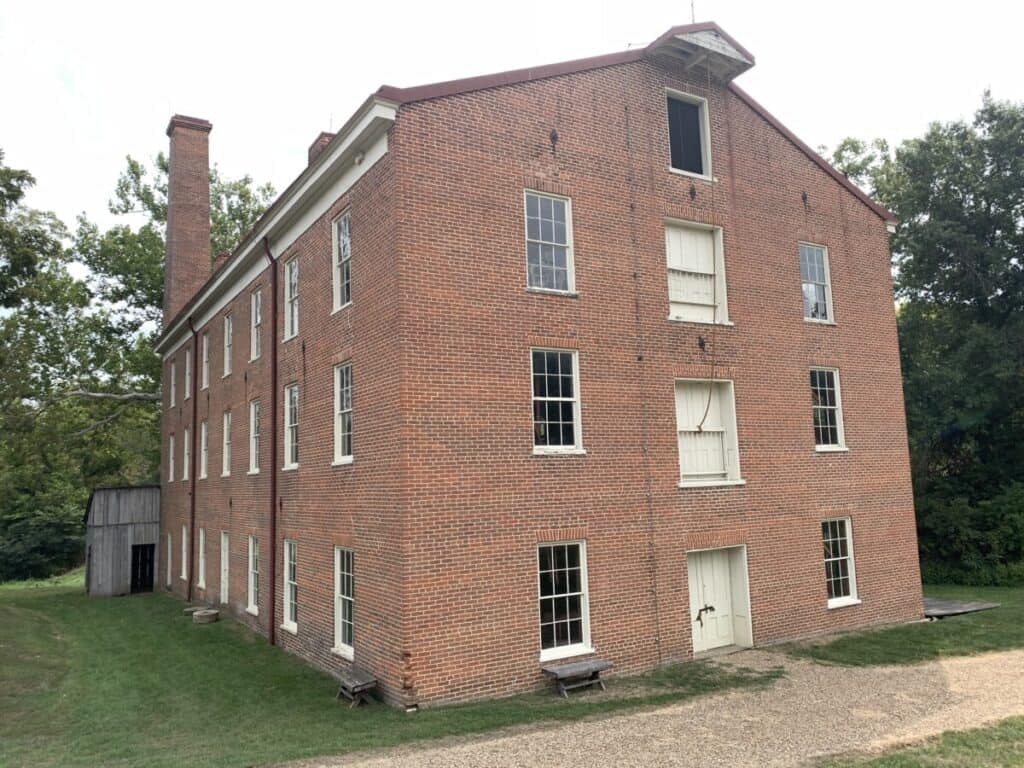
Before you go, check this out!
We have lots more on the site to show you. You've only seen one page. Check out this post which is one of the most popular of all time.

This was our second trip to Watkins Mill, but the first camping trip where we stayed long enough to visit the information center and take tours of the house and mill. The park is located about 30 miles north of Kansas City on I-35.
The information center has a large diorama that illustrates the site’s size and building orientations so when we took the tours, we had a better appreciation for the physical size of the operation. The center also has an introductory video presentation and displays of farm, travel, and manufacturing equipment with explanations on how they were used on the site. There was also a small, working loom for visitors to try out for themselves.

We missed the period actors from the Living History Farm Program which allow visitors to watch a family from the 1870 live, work, and play.
It cost us $10.00 each for a walking tour through the house and mill and both of our guides were knowledgeable and entertaining. We’ll take the tour again the next time we go but read more about the Watkins family and mill history before the trip to add more depth to the overall experience.

Walking through the actual spaces and thinking back to how the farm operated in the 1870s, the number of guests routinely hosted at one time (upwards of 20), and comparing their tools and technology to ours, it was sobering to think about the physical effort required back then just to enjoy some of the creature comforts most of us take for granted today (shelter, water, food, clothes).
Waltus Watkins moved to the area from Kentucky in 1830 and set up a spinning mill, circular sawmill, and gristmill. Then…

He married, started a family, and grew his operation to include industrial operations, brick-making, and raising livestock (cattle, sheep, horses, and pigs). Over the decades, his family grew, and they helped run the other businesses that Watkins ventured into. They farmed corn, oats, hay, grew orchards, and maintained an apiary for honey and beeswax.

The mill is the only surviving 19th century mill in the U.S. with its equipment intact. Walking on the original floors and touching some of the equipment brought context, sure, but also seemed to place the 1870s so close to us that we could almost walk through a door and be there.

This stop was four of five. I’ll explain in a post about Wallace State Park that you can read here.
NomadicNeighborhood is a participant in the Amazon Services LLC Associates Program, an affiliate advertising program designed to provide a means for sites to earn advertising fees by advertising and linking to Amazon.com. We also participate in other affiliate programs which compensate us for referring traffic.
How to Empty a Composting Toilet: Legal considerations and more
Composting toilets divert liquid and solid waste into separate tanks, and each must be emptied independently. Liquid waste is dumped into dump stations, vault toilets, or flush toilets. Solid...
Empty a Black Tank: 16 Steps That Include a Test and Preconditioning
[wpcode id="2133"] When I first started RVing, it took me close to an hour to empty the black and gray tank. I was learning and didn’t want to make a mess, so I took my time. As I gained more...